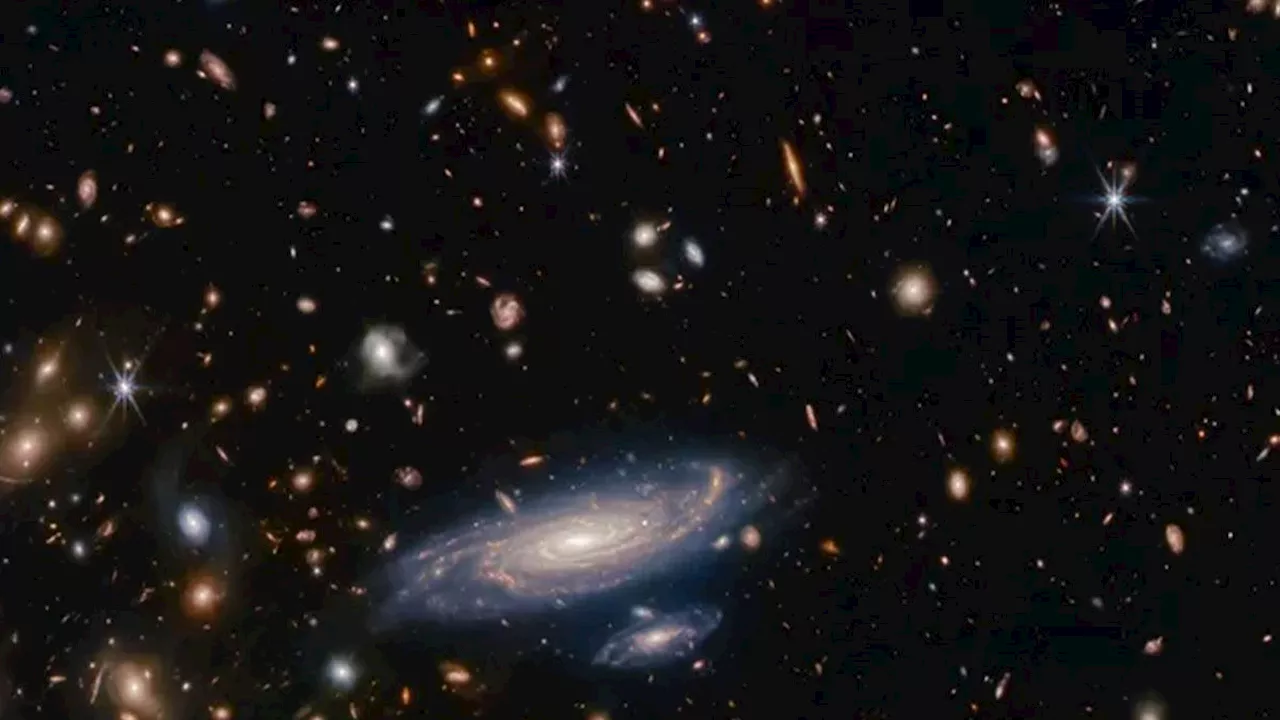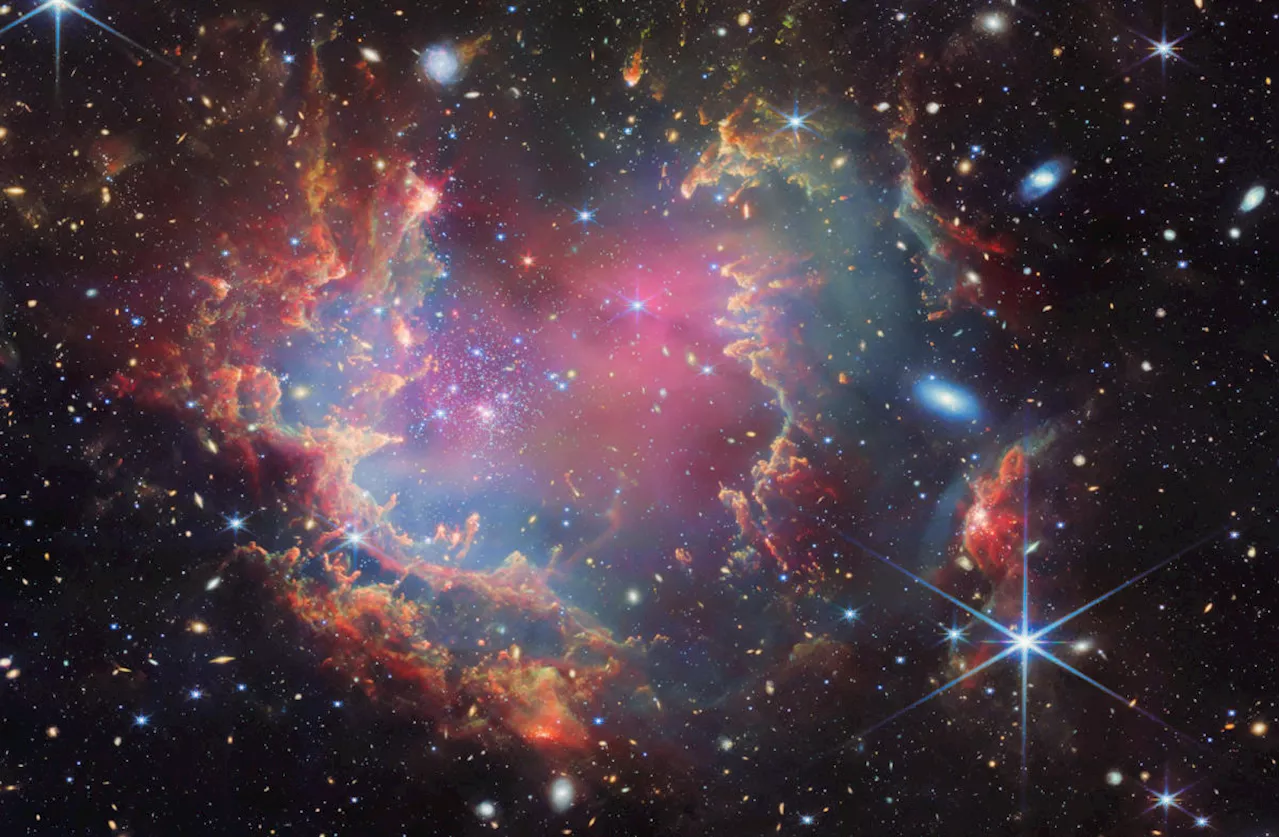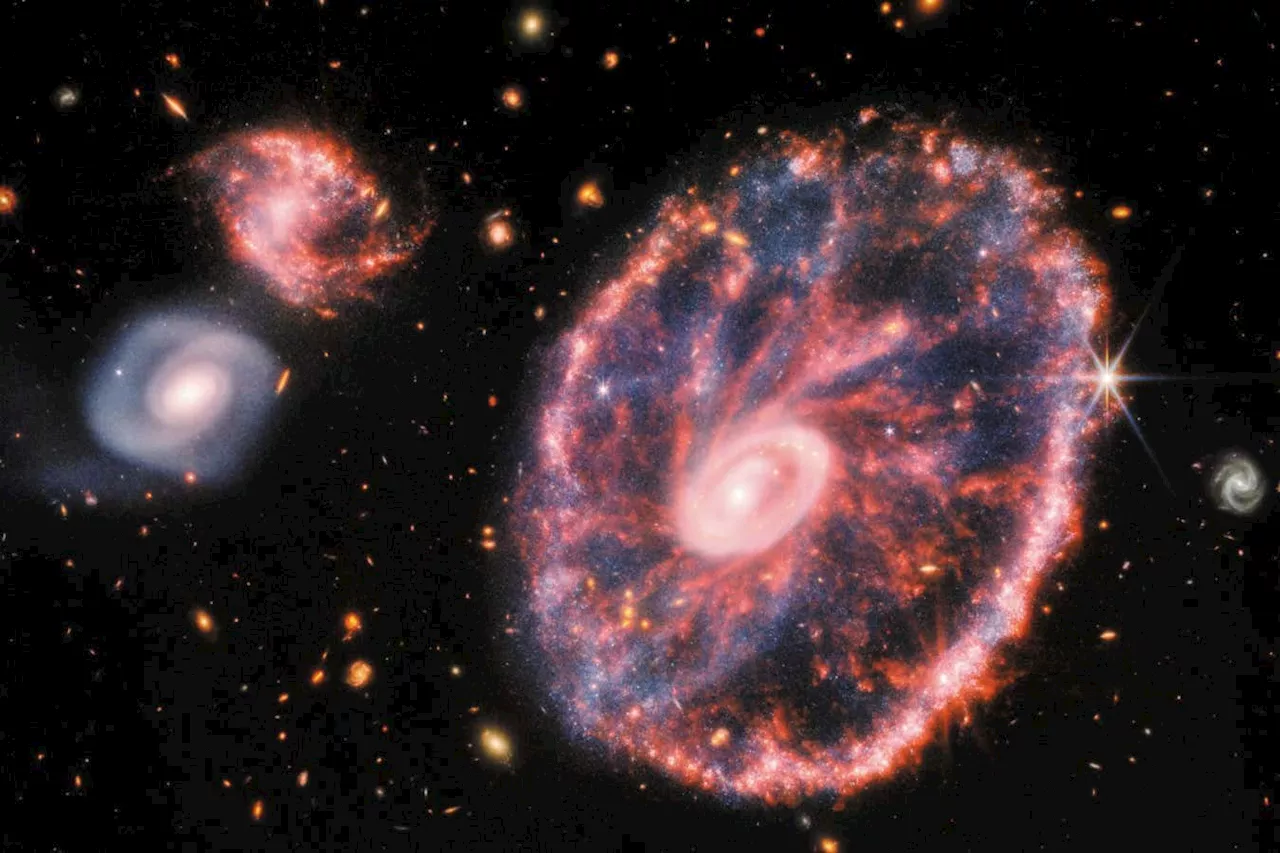Jamie Carter is an award-winning reporter and experienced stargazer who covers the night sky, astro-tourism, the northern lights and space exploration. He received the 2023 Popular Media Award from the American Astronomical Society's Solar Physics Division and is the author of A Stargazing Program for Beginners. Writing for Forbes.
There is no evidence of giant planets around Vega, one of the brightest, most famous and most important stars in the night sky, according to new research. Using the Hubble and James Webb Space Telescopes, a team of astronomers at the University of Arizona, Tucson, studied a disk of debris about 100 billion miles in diameter around the iconic star. They discovered a perfect circle, with no disruptions, meaning no planets. For astronomers, that’s hugely puzzling.
However, the smoothness of Vega’s disk is confusing to astronomers because it means the make-up of its system is different from the solar system. “It’s making us rethink the range and variety among exoplanet systems,” said Kate Su of the University of Arizona, lead author of a paper presenting the Webb findingsInstrument . It reveals three nested belts extending out to 14 billion miles from the star. The inner belts – which had never been seen before – were revealed by Webb for the first time.
United States Latest News, United States Headlines
Similar News:You can also read news stories similar to this one that we have collected from other news sources.
 James Webb Space Telescope sees lonely supermassive black hole-powered quasars in the early universeRobert Lea is a science journalist in the U.K. whose articles have been published in Physics World, New Scientist, Astronomy Magazine, All About Space, Newsweek and ZME Science. He also writes about science communication for Elsevier and the European Journal of Physics. Rob holds a bachelor of science degree in physics and astronomy from the U.K.
James Webb Space Telescope sees lonely supermassive black hole-powered quasars in the early universeRobert Lea is a science journalist in the U.K. whose articles have been published in Physics World, New Scientist, Astronomy Magazine, All About Space, Newsweek and ZME Science. He also writes about science communication for Elsevier and the European Journal of Physics. Rob holds a bachelor of science degree in physics and astronomy from the U.K.
Read more »
 James Webb telescope discovers 'inside out galaxy' near the dawn of timeBen Turner is a U.K. based staff writer at Live Science. He covers physics and astronomy, among other topics like tech and climate change. He graduated from University College London with a degree in particle physics before training as a journalist.
James Webb telescope discovers 'inside out galaxy' near the dawn of timeBen Turner is a U.K. based staff writer at Live Science. He covers physics and astronomy, among other topics like tech and climate change. He graduated from University College London with a degree in particle physics before training as a journalist.
Read more »
 NASA's Webb telescope detects the first potential brown dwarfs outside our galaxyMariella Moon has been a night editor for Engadget since 2013, covering everything from consumer technology and video games to strange little robots that could operate on the human body from the inside one day. She has a special affinity for space, its technologies and its mysteries, though, and has interviewed astronauts for Engadget.
NASA's Webb telescope detects the first potential brown dwarfs outside our galaxyMariella Moon has been a night editor for Engadget since 2013, covering everything from consumer technology and video games to strange little robots that could operate on the human body from the inside one day. She has a special affinity for space, its technologies and its mysteries, though, and has interviewed astronauts for Engadget.
Read more »
 10 stunning James Webb Space Telescope images show the beauty of spaceMaggie Aderin-Pocock, who has worked on the JWST, catalogues the science behind its most stunning images in her new book, Webb's Universe. Here's her pick of the telescope’s best shots
10 stunning James Webb Space Telescope images show the beauty of spaceMaggie Aderin-Pocock, who has worked on the JWST, catalogues the science behind its most stunning images in her new book, Webb's Universe. Here's her pick of the telescope’s best shots
Read more »
 James Webb Space Telescope finds 1st 'failed star' candidates beyond the Milky WayRobert Lea is a science journalist in the U.K. whose articles have been published in Physics World, New Scientist, Astronomy Magazine, All About Space, Newsweek and ZME Science. He also writes about science communication for Elsevier and the European Journal of Physics. Rob holds a bachelor of science degree in physics and astronomy from the U.K.
James Webb Space Telescope finds 1st 'failed star' candidates beyond the Milky WayRobert Lea is a science journalist in the U.K. whose articles have been published in Physics World, New Scientist, Astronomy Magazine, All About Space, Newsweek and ZME Science. He also writes about science communication for Elsevier and the European Journal of Physics. Rob holds a bachelor of science degree in physics and astronomy from the U.K.
Read more »
 James Webb Space Telescope is 'science and magic rolled together,' says iconic astronomer Maggie Aderin-PocockBen Turner is a U.K. based staff writer at Live Science. He covers physics and astronomy, among other topics like tech and climate change. He graduated from University College London with a degree in particle physics before training as a journalist.
James Webb Space Telescope is 'science and magic rolled together,' says iconic astronomer Maggie Aderin-PocockBen Turner is a U.K. based staff writer at Live Science. He covers physics and astronomy, among other topics like tech and climate change. He graduated from University College London with a degree in particle physics before training as a journalist.
Read more »
